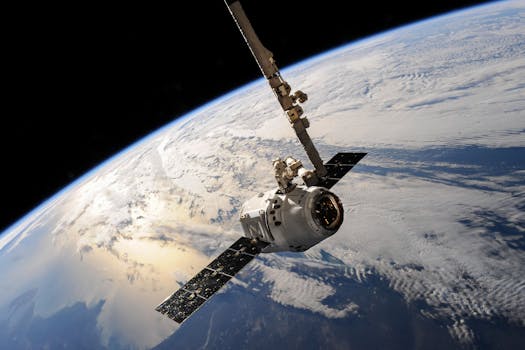
GEO Satellites: Unlocking the Power of Global Connectivity
GEO satellites, or Geostationary Orbit satellites, are a type of satellite that orbits the Earth at an altitude of approximately 36,000 kilometers, remaining stationary relative to a fixed point on the planet. The Focus Keyword: GEO satellites have revolutionized the way we communicate, navigate, and access information, making them an indispensable part of modern life.
How GEO Satellites Work
GEO satellites are designed to operate in the geostationary orbit, which allows them to maintain a fixed position in the sky, relative to a specific point on the Earth’s surface. This unique characteristic enables GEO satellites to provide continuous coverage of a particular region, making them ideal for applications such as telecommunications, broadcasting, and weather forecasting. The satellites are equipped with transponders, which receive and retransmit signals, allowing data to be transmitted between different locations on the ground.
Applications of GEO Satellites
GEO satellites have a wide range of applications, including telecommunications, where they provide internet connectivity, voice, and data services to remote and underserved areas. They also play a critical role in navigation, enabling GPS and other satellite-based navigation systems to function. Additionally, GEO satellites are used for weather forecasting, providing vital data on atmospheric conditions, sea surface temperatures, and other environmental factors. Furthermore, they are used for remote sensing, allowing for the monitoring of crop health, deforestation, and natural disasters.
Benefits and Challenges of GEO Satellites
The benefits of GEO satellites are numerous, including global connectivity, cost-effectiveness, and reliability. However, there are also challenges associated with GEO satellites, such as signal latency, interference, and space debris. Despite these challenges, the demand for GEO satellites continues to grow, driven by the increasing need for global connectivity and the expanding range of applications that rely on satellite communications.
Future of GEO Satellites
The future of GEO satellites looks promising, with advancements in technology and the development of new applications, such as 5G networks and Internet of Things (IoT). The increasing demand for global connectivity and the growing need for satellite-based services will continue to drive the growth of the GEO satellite market. As the industry continues to evolve, we can expect to see new innovations and applications emerge, further expanding the role of GEO satellites in our daily lives.

